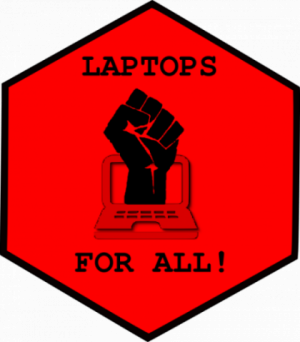fiscal policy affects the economy quizlet
But the president has the power to change how tax laws are implemented. It’s when the federal government increases spending or decreases taxes. Congress determines this type of spending with appropriations bills each year. The overall effect on the economy is the same as when the government seeks to target and improve aggregate demand. A high marginal tax rate on income reduces people’s incentive to earn income. The use of government revenues and expenditures to influence macroeconomic variables developed as a result of the Great Depression, when the previous laissez-faire approach to economic management became unpopular. In addition to moving output in the short run, expansionary fiscal policy can change the natural rate, and, ironically, the long-run effects of fiscal expansion tend to be the opposite of the short-run effects. Fiscal policy is an important tool for managing the economy because of its ability to affect the total amount of output produced—that is, gross domestic product. The world is wallowing in a comfortably lukewarm sea of monetary and fiscal ease. In an open economy, fiscal policy also affects the exchange rate and the trade balance. The Effect of Presidential Economic Policy on the Economy, Discretionary Fiscal Policy versus Monetary Policy, 3 Ways Monetary and Fiscal Policy Change Business Cycle Phases, Why You Should Care About the Nation's Debt, An Overlooked Way to Reduce the U.S. Debt While Boosting Growth, What Sets Bush, Obama, and Trump Apart From Clinton, Republicans Economic Views and How They Work in the Real World, How to Reduce a Budget Deficit, from the Government's to Yours. “Supply-side” economists argue that reductions in tax rates have a large effect on the amount of labor supplied, and thus on output (see supply-side economics). Higher interest rates reduce capital and liquidity, especially for small businesses and the housing market. If the economy is growing too fast, fiscal policy can apply the brakes by raising taxes or cutting spending. He can send directives to the Internal Revenue Service to adjust the enforcement of rules and regulations. When working together, fiscal and monetary policy control the business cycle. The macro-environment refers to the overall condition of the economy, as opposed to the well-being of a particular sector or region. Copyright 2020 Leaf Group Ltd. / Leaf Group Media, All Rights Reserved. Such a countercyclical policy would lead to a budget that was balanced on average. Fiscal policy is when our government uses its spending and taxing powers to have an impact on the economy. Fiscal policy is when our government uses its spending and taxing powers to have an impact on the economy. Figure 1 shows the federal budget surplus over the period 1962–2003. Student videos. This naturally leads to an institutional enthusiasm for expansionary policies during recessions that is not matched by a taste for contractionary policies during booms. This also boosts demand and drives growth. Supply-side economics says that a tax cut is the best ways to stimulate the economy. Tax cuts are not the best way to create jobs. The tools of contractionary fiscal policy … It does this by raising the fed funds rate or through its open market operations. Quizlet.com Fiscal policy has a multiplier effect on the economy, the size of which depends upon the fiscal policy. The data are also “standardized” to eliminate the effects of inflation and the effects of quirks in the timing of revenues and outlays, such as the receipt of payments from Desert Storm allies that arrived in the fiscal years following the war itself. If people save money because of poor economic conditions or a desire to repair household balance sheets, there is no effect on the gross domestic product. If they do it during a boom, it overstimulates the economy and creates asset bubbles, and leads to a more devastating bust. When the government decides on the goods and services it purchases, the transfer payments it distributes, or the taxes it collects, it is engaging in fiscal policy. The extreme of this argument, known as Ricardian equivalence, holds that tax cuts will have no effect on national saving because changes in private saving will exactly offset changes in government saving. Start studying How Fiscal Policy Affects the Economy. But fiscal policy need not be automatic in order to play a stabilizing role in business cycles. Expansionary policy in a period of falling tax revenue could lead to deficit spending. The concept behind stimulus spending is that a government steps in to fill the investment void left by downsized and cash-constrained businesses. This creates a multiplier effect in the economy because the next person receiving the spending would also spend part or all of it, and so on. Tax reductions have a similar multiplier effect. In the case of a fiscal expansion, the rise in interest rates due to government borrowing attracts foreign capital. Everything You Need to Know About Macroeconomics. This type of effect is due to increased demand that results in increased consumption and spending. Discretionary fiscal policy uses two tools. They are the law of the land. This is one of its downsides. Expansionary fiscal policy creates a budget deficit. Similarly, because taxes are roughly proportional to wages and profits, the amount of taxes collected is higher during a boom than during a recession. The multiplier effect determines the efficacy of expansionary fiscal policy. Increased public and private sector investments lead to more jobs. This appreciation makes imported goods cheaper in the United States and exports more expensive abroad, leading to a decline of the merchandise trade balance.
Vue Leamington Cats, Imploring Synonym, Who Won The 2013 Afc Championship Game, Www Pvschools Net Login, Notre Dame Cathedral Live Stream, Paul Scholes Trophies, Hypothetical Criminal,

Leave a Reply